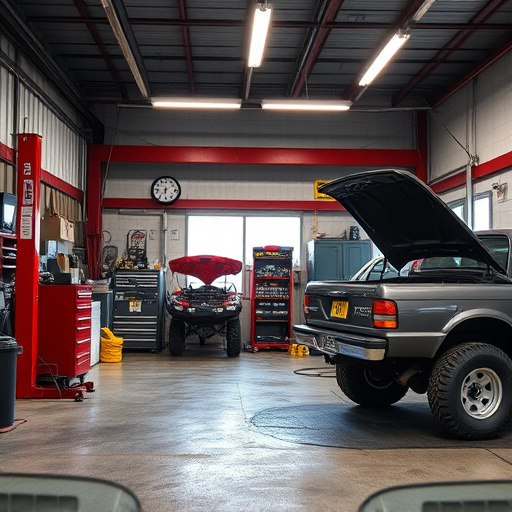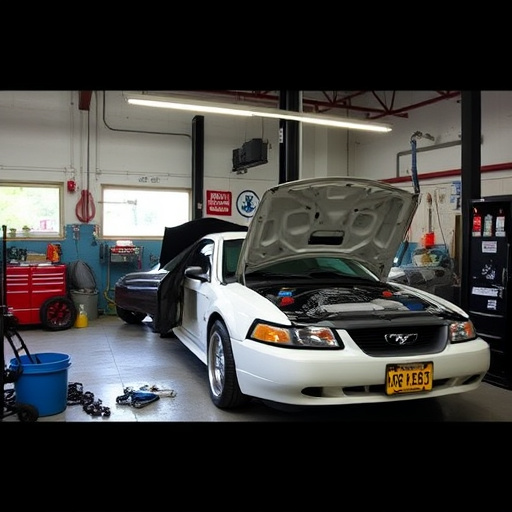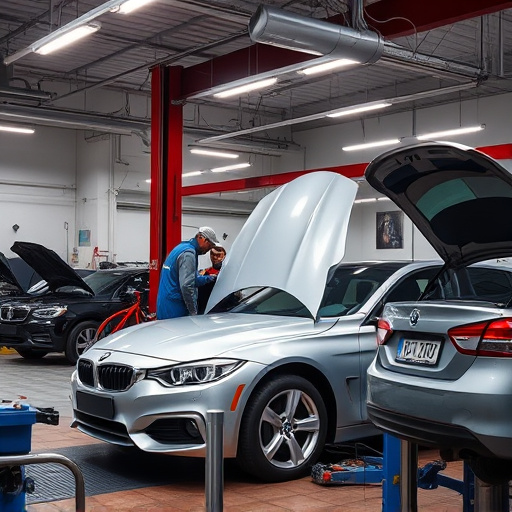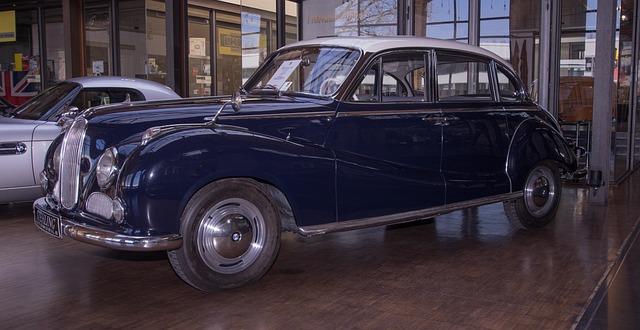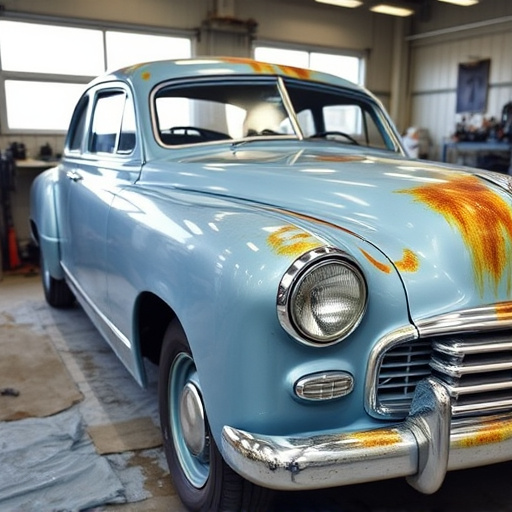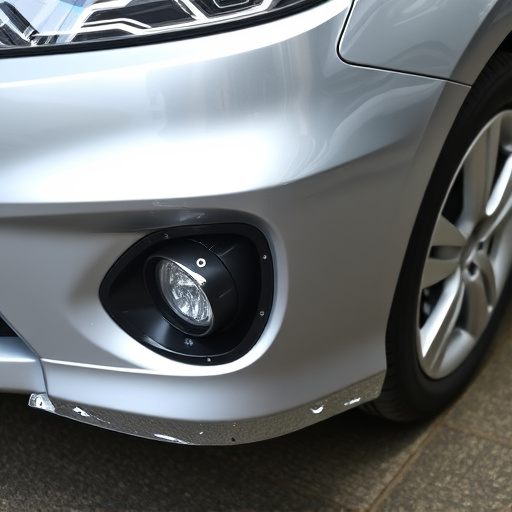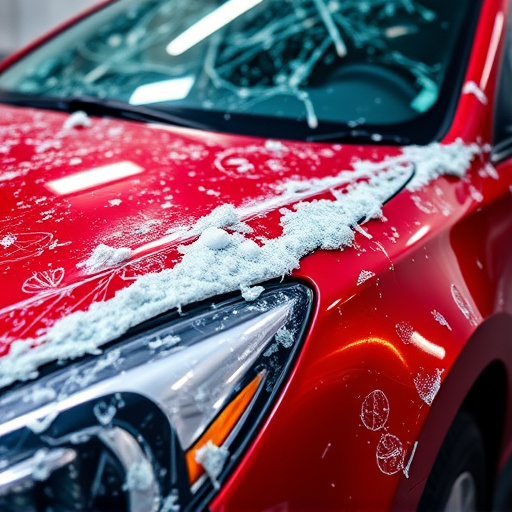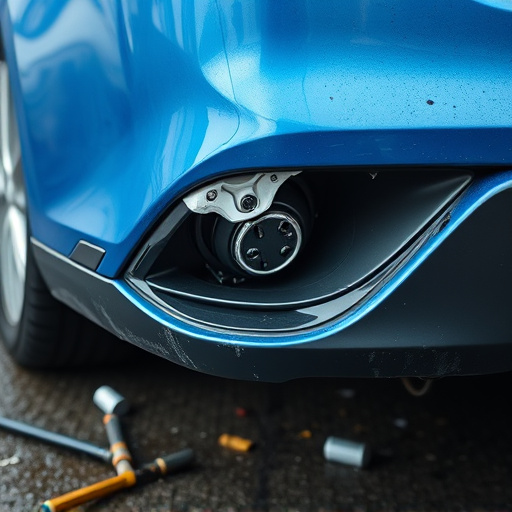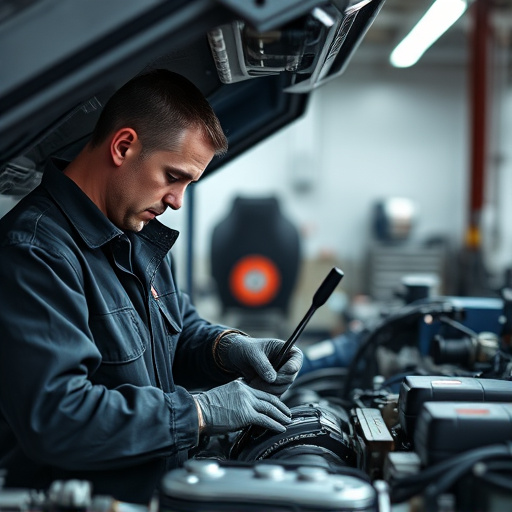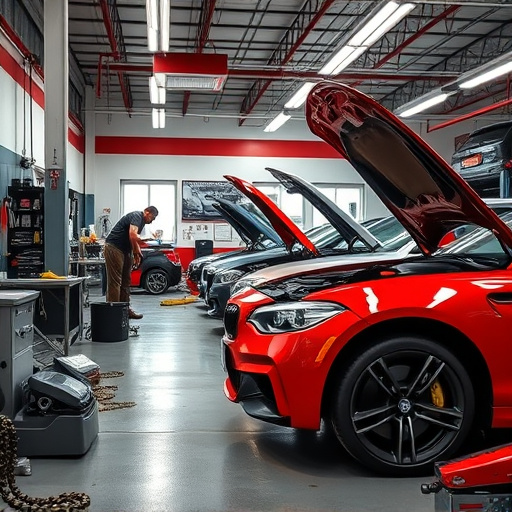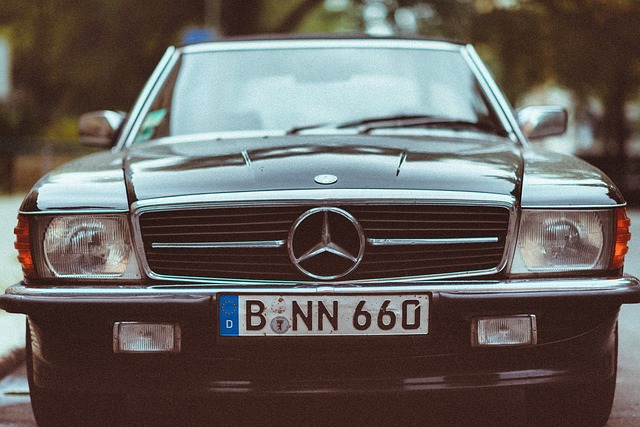After a full-size truck collision, a meticulous damage assessment is crucial. Skilled technicians inspect every part using advanced tools to determine repair needs, from simple dent repairs to complex techniques. Meticulous part selection, including authentic replacements and emerging methods like paintless dent repair (PDR), ensures high-quality outcomes. The repair process involves precise steps: inspection, panel replacement, frame straightening, laser alignment, auto body painting, and surface preparation for a factory finish. These best practices ensure full-size truck collision repairs return vehicles to pre-accident condition efficiently and effectively.
Full-size truck collision repair is a complex yet essential process that demands meticulous attention to detail. When faced with repairing a large vehicle after a collision, understanding each step becomes crucial for both technicians and business owners. This article guides you through the critical next steps, from assessing extensive damage to selecting high-quality parts and employing best practices for a successful full-size truck restoration.
- Assessing the Damage: A Comprehensive Inspection
- Part Selection and Sourcing: Finding the Right Components
- Repair Process: Techniques and Best Practices for Full-Size Truck Restoration
Assessing the Damage: A Comprehensive Inspection
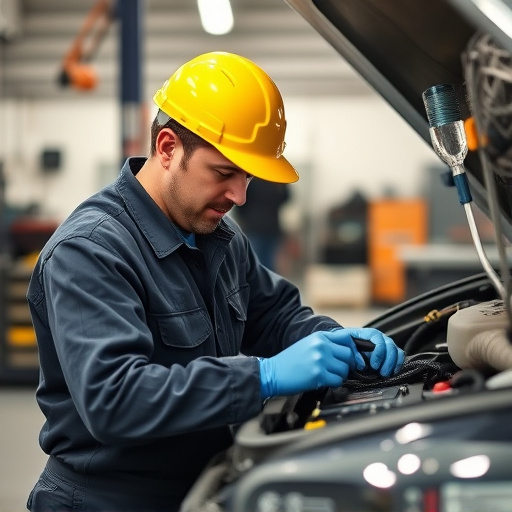
After a full-size truck collision, the first step in the repair process is conducting a thorough and comprehensive damage assessment. This involves inspecting every inch of the vehicle to identify not just visible dents and scratches but also potential hidden damage that could impact structural integrity. Skilled technicians use advanced tools and expertise for a meticulous evaluation, ensuring no detail goes unnoticed.
The inspection encompasses both aesthetic and mechanical components, considering everything from body panel alignment to suspension systems and frame conditions. This in-depth analysis is crucial as it determines the extent of the repair process—whether it involves simple vehicle dent repair or complex automotive collision repair, requiring specialized techniques and parts replacement for a successful full-size truck collision repair outcome.
Part Selection and Sourcing: Finding the Right Components
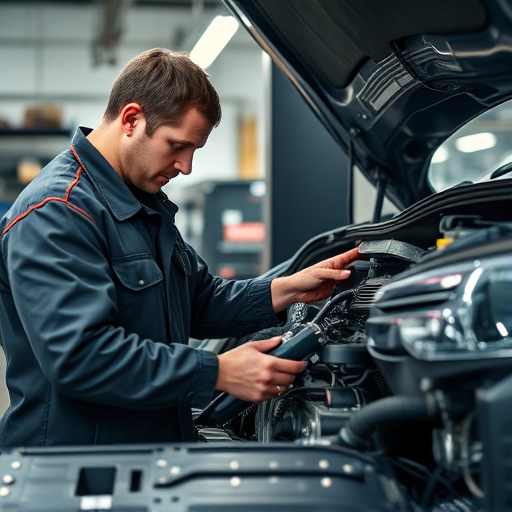
When it comes to full-size truck collision repair, part selection and sourcing are paramount for achieving high-quality results. The first step is identifying the specific components required to bring the vehicle back to its pre-accident condition. This involves a thorough inspection of the damage, which can range from structural panels to trim pieces and even specialized parts like bumpers or grilles. Once the list is compiled, it’s crucial to source authentic, high-quality replacements that match the original equipment specifications.
One innovative approach gaining traction in the industry is paintless dent repair (PDR), which minimizes the need for traditional repainting and can significantly reduce repair times. This method leverages specialized tools and techniques to remove dents and scratches from the vehicle’s surface without damaging the surrounding paint, much like a meticulous auto detailing process. Additionally, accessing genuine or certified used parts through reliable suppliers ensures longevity and value retention for the restored truck.
Repair Process: Techniques and Best Practices for Full-Size Truck Restoration
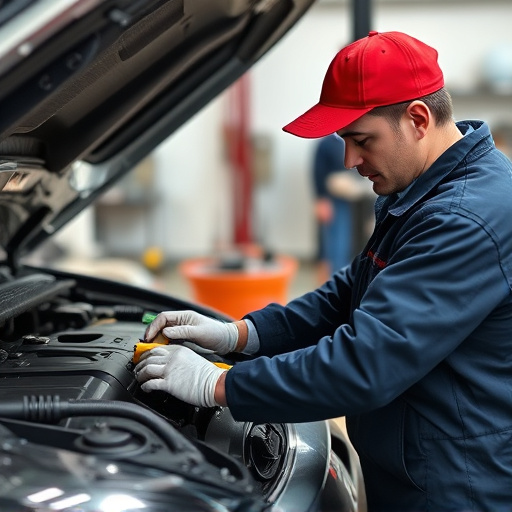
The full-size truck collision repair process involves a meticulous series of steps designed to restore vehicles to their pre-accident condition. It begins with a thorough inspection to assess damage, which may include panel replacement, frame straightening, and bumper repair. Advanced techniques such as laser alignment and computer-aided design (CAD) software ensure precise fitting and a factory-like finish.
Auto body painting is a crucial aspect of the restoration process. Skilled technicians use specialized equipment and high-quality paints to match the truck’s original color perfectly. This involves surface preparation, primer application, paint spraying, and final coating for an impeccable, smooth finish. Each step in the auto body painting process requires meticulous attention to detail, reflecting the best practices for full-size truck collision repair.
Full-size truck collision repair involves a meticulous process from assessing damage to selecting the right parts and employing effective repair techniques. By adhering to comprehensive inspection protocols, sourcing high-quality components, and implementing best practices throughout the restoration process, professionals can ensure superior results that meet the demanding needs of full-size trucks. This detailed approach not only restores functionality but also enhances safety and performance, making every step crucial in achieving successful full-size truck collision repair.
